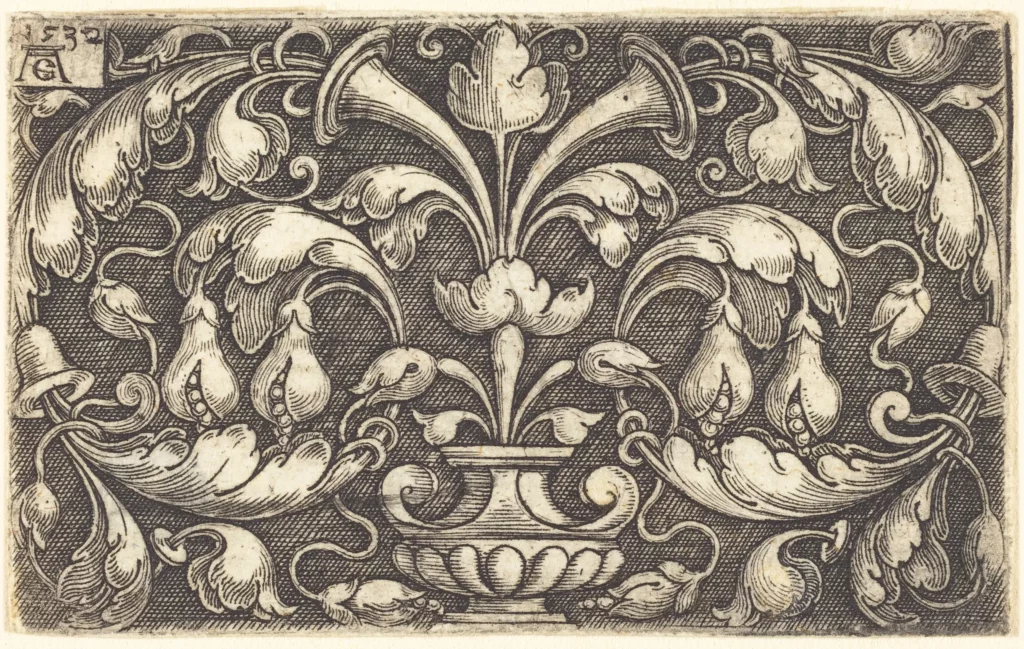
E-commerce for Winery Websites
When we connect with clients for website design and development projects, they nearly always ask us for advice about e-commerce. We’re happy to help.
Website e-commerce is vitally important for wineries. For most of our clients it's the main DTC channel. And wineries that sell wine online have specific needs.
Over the years, working with more than 125 wineries, we have learned the ins and outs of all the major winery e-commerce providers. In fact, we’re so invested at this point that our Creative Director, Jon Krauss, has developed custom integrations for three different platforms.
In this article, we share some of the insights we’ve gleaned over the years from our work.
- The Advantages of Custom Integration of Wine‑Specific Platforms
Is It Worth Investing in E-Commerce?
Why Choose a Winery-Specific E-commerce Provider?
The Advantages of Professional Website Integration - Integration, Pricing & Options
Hosted Solutions
Seamless Integration
CRM, Compliance, Shipping & Other Factors to Consider
Pricing - Popular Winery E-commerce Platforms Featuring Seamless Integration
Commerce7
eCELLAR
WineDirect
The Advantages of Custom Integration of Wine‑Specific Platforms
Is It Worth Investing in E-Commerce?
A big shift happened during the pandemic, with many wineries moving away from three-tier distribution and toward the more profitable direct-to-consumer (DTC) model. Every winery’s numbers pencil out differently, but we’ve heard from clients who can make an 80% profit margin through DTC sales, as opposed to 30% via wholesale and retail settings. (Wow!)
Your numbers may not stack up quite so dramatically, but the fact remains that an investment in high-functioning e-commerce pays off. Every sale you make through your website not only circumvents the three-tier system; it also negates the need to staff an in-person visit. For brands and wineries without a tasting room, e-commerce is crucial. Even for those with a strong hospitality program, e-commerce expands the community of customers, as anyone, anywhere can potentially purchase your wine.
Why Choose a Winery-Specific E-Commerce Provider?
We often hear from clients who started out with a standard e-commerce platform that was not specifically developed for wineries. Sooner or later, these platforms present insurmountable challenges, and these business owners come to us for advice.
Wineries have specific needs due to regulatory requirements, including age gates, shipping restrictions, and a diverse array of state laws. In addition, the wine industry is a true outlier. Largely produced by small businesses with nationwide reach, wine is often sold via an allocation or club model. The standard e-commerce provider just isn’t set up to handle the unique challenges our industry poses.
By contrast, the best winery e-commerce platforms are designed to handle monthly, quarterly, or biannual club shipments, including flexible clubs that allow customers to choose the wines they want to include. And they can also manage allocations, in which customers may be assigned a number of products from a limited supply.
While winery e-commerce companies are adept at many things, they can’t offer everything. But the best make it easy to integrate support software to handle compliance for shipping and taxes, fulfillment, email marketing, and more.
In addition, the best winery e-commerce platforms allow wineries to create collections consisting of multiple products, and rich product detail pages, with vintage notes, tech information, and critical scores. They also include customer account areas, where users can log in, view order history, and manage their payment methods, communication methods, and shipping information.
The Advantages of Professional Website Integration
E-commerce software generally includes an out-of-the-box online storefront. When added to a winery website, the contrast can be jarring: The interface is styled with the e-commerce provider’s color palette, and default system fonts like Arial. One look at a basic storefront like this, and many customers may wonder about the credibility of the website. Wine is a luxury product, after all, and wine consumers’ shopping experiences are reinforced by their trust in the transaction.
At Vin, we take pride in custom-styling online storefronts, club signup forms, and members areas to elegantly match our clients’ visual identities as well as their website design. But for us, integration doesn’t stop there. We have found that we can achieve the best user experience and most effective sales funnels by integrating e-commerce content through the website.
As customers explore your website, they are more likely to make purchases if the shopping experience is smooth and visually appealing—just as they are more likely to buy items in a well-appointed brick-and-mortar store, with enticing product displays.
In the same way—depending on the e-commerce provider—we are able to embed attractive bottle displays throughout a website in addition to the online storefront. We can show products and link to product details on any page, where it can be effective to promote specific collections, such as current releases or seasonal favorites. Some e-commerce platforms even offer the ability to display targeted products selected according to the site visitor’s preferences.
We find ways to embed products so that sales happen organically. For wineries working with multiple vineyards, we often create vineyard detail pages, where we can highlight and link to the wines sourced from that vineyard. Or a post about an upcoming virtual tasting can guide site visitors to purchase the wines that will be discussed.
If your e-commerce platform does not offer the ability to embed products, it’s still possible to display wines using the WordPress publishing system. However, this approach creates extra work every time an update is required, such as when there is a vintage change. Whoever is managing the website must go into the product post and change, replace, or remove it. The best e-commerce software makes this duplication of work unnecessary. All of your product information lives in one place: Your e-commerce admin area.
Or, learn more about our winery e-commerce integration services.
Integration, Pricing & Options
Hosted Solutions
When we are shopping online with a brand we trust, we subconsciously take note of the url—say it’s “brandwetrust.com.” It can feel disconcerting, then, to be bumped to a different URL when we’re ready to pay, even if that subdomain is as slight a variation as “shop.brandwetrust.com.” These standalone storefronts with separate URLs come from e-commerce providers known as “hosted solutions.”Depending on the platform, the e-commerce vendor will do the hosting and bundle that into the service cost.
While each winery’s situation is different, we generally recommend against hosted solutions. They bring either overhead or constraints with the website. For the winery, a hosted storefront is an entirely separate website, which must be managed and updated alongside the main website. So if you change your messaging, logo, brand fonts or color palette, you’ll likely need to make those updates in two different places. Over time, we’ve seen hosted storefronts diverge significantly from the look and feel of wineries’ home sites, to the point where the two look like entirely different businesses.
To get around this issue, some hosted e-commerce platforms simply offer to host the entire website around their own proprietary content management system. But this solution, too, has drawbacks.
At the low end, these websites take the form of cookie-cutter templated page layouts that lack character and alignment with brand identity. On the high end, we see beautiful hand-crafted websites built around a proprietary content management system, but there is a catch to these, as well: They lock clients into returning to their e-commerce provider for custom design updates at potentially expensive rates.
We see this “all your eggs in one basket” approach as risky. Should your e-commerce provider face a financial or technological challenge that forces it to halt or cease operations, your winery may end up without a website. In addition, proprietary publishing systems can’t evolve as quickly as widely used, ever-progressing, open-source software. A company that focuses on e-commerce and serves a small customer base just doesn’t have the resources to keep up, making it expensive and challenging to maintain and grow a website over time.
For these reasons, we receive queries at Vin from wineries looking to move away from proprietary publishing systems and redesign on the solid foundation of WordPress, with the freedom to seamlessly integrate whichever e-commerce provider they’d like.
Seamless Integration
When the e-commerce application is unified with the website, we say it’s seamlessly integrated. E-commerce is provided by a vendor, but functions as part of the home website. A designer/developer embeds its code, and styles the fonts, color palette, etc. so that the e-commerce area looks consistent with the rest of the site.
We see seamless integration as the most desirable feature for an e-commerce platform. Wineries invest so much in building beautiful websites—strategy, copywriting, photography, video, design, development, and more—with the aim of creating an idyllic, immersive online environment for site visitors. It doesn’t make sense to break the spell at the most crucial points in the sales funnel.
At Vin, we often say that brand building is about creating trust with an audience. A winery with an elegantly designed website is making a brand promise about the quality of its products. Customers expect that quality to be apparent across all touchpoints. If that level of quality drops off anywhere in the chain, from vineyard, to winemaking, to tasting room, and website, customers will notice and may react negatively.
We have seen poorly implemented and discordantly integrated e-commerce dissuading sales, and we want to see our clients succeed. So we recommend seamless, winery-specific e-commerce integration. We have heard from countless satisfied clients that this is an investment that does not fail to pay off.
CRM, Compliance, Shipping & Other Factors to Consider
We have to admit that we are biased here at Vin. We focus on how e-commerce platforms perform as part of an overall website design and development project. We can tell you which providers make for the smoothest online shopping experience, but winery owners should consider a number of other factors as they decide which provider to work with. We suggest compiling a list of your priorities.
As you compare potential e-commerce providers, contact them and ask for a demo. Ask them how they would handle your priorities. And have them show you how a staff member might manage key tasks.
Here are some examples of questions you might ask e-commerce candidates:
- How would we use your CRM in our tasting room?
- Which compliance and shipping services does your software integrate with?
- Can I use my appointment booking software with your platform? If not, how does your platform handle reservations and event registrations?
- Will my direct marketing software integrate with your platform? If not, how should I approach email newsletters?
- How do you handle allocations?
- How about clubs? Can my club members personalize their shipments?
- I am currently with a different e-commerce platform. If I move to yours, how can I ensure that my customer data is transferred seamlessly?
- What is the process for guiding winery customers through an e-commerce migration?
- What is your customer support like? How soon can I expect a response if I have a question? Will I have a dedicated support contact?
Pricing
Clients often ask us how pricing compares between e-commerce platforms. We can’t rattle off a definitive answer to this question, unfortunately, because providers use different pricing models, typically scaled to the size of the business. We recommend reaching out to the platforms you are interested in and requesting a detailed breakdown of what your winery’s pricing would look like, given the number of cases you produce and your projected revenue from online sales. Also, ask about the cost of integrating external apps and services, such as shipping or direct-marketing software.
Keep in mind that platforms that appear inexpensive may roll in hidden costs, and those that look pricey may pay for themselves by substantially increasing orders. Don’t forget that a winery’s website is often its primary touchpoint, and first impressions matter in the wine market. In addition, DTC sales are highly profitable. An investment in high-quality website design, development, and e-commerce integration cannot fail to pay off.
Popular Winery E-commerce Platforms
Featuring Seamless Integration
We’ve worked with just about every e-commerce partner serving wineries, and we’re happy to talk our clients through the options. Here’s what you need to know about the major players.
Commerce7
In late 2021, Commerce7 released its v2 front end. It offers marketing tools, the ability to display e-commerce content anywhere on the website, personalized content, and more. An app marketplace makes it possible to integrate numerous external platforms, including MailChimp, Tock, reporting, and compliance and shipping partners.
From the designer/developer perspective, we have found this platform to be robust and powerful. We are able to customize the styling and create a smooth and seamless shopping experience for customers, including slick product embeds. In addition, attractive and flexible product detail pages negate the need to constantly update product information on the website as well as the storefront. Their robust APIs enable fine-grained control for custom development.
We have found that the C7 team and developer community respond quickly to requests via their dev Slack channel, and they have been responsive and quick to release features, updates, and fixes that our clients have requested.
But while Commerce7 aims to be a fit for most wineries, we have heard from some smaller producers that it’s not the best platform for their simpler needs and smaller budgets.
eCELLAR
Founded in 1999, eCELLAR is one of the most long-standing e-commerce providers, but it stays relevant by releasing continual updates. We truly appreciate eCELLAR’s small, devoted, and responsive customer service team, who respond quickly and take the time to walk clients through solutions via phone, email, or video call.
We find that eCELLAR is popular with larger wineries. Our eCELLAR clients say they find it easy to use for tasks such as documenting sales, inventory, and customer information. They enjoy its exceptional customization capabilities, including the ability to create custom templates for anything from an email to a receipt. The customization for messages enables customizing any e-commerce text, including multi-language support.
One limitation of this platform is, due to the nature of its SPA (single page application), e-commerce functionality like product lists and registration forms are siloed within the application, so products can’t be embedded in the website pages.
WineDirect
Formerly Vin65, WineDirect was for many years the most popular e-commerce platform, and is currently undergoing a transformation.
In 2021, WineDirect merged with the e-commerce giant BigCommerce. Then, in January 2025, Commerce7 acquired WineDirect's SaaS (Software as a Service) Division. As part of this transition, WineDirect’s SaaS platform will be retired.
Wineries currently on WineDirect will be migrated to C7 over the course of 2025 and 2026. As Commerce7 Partners, we at Vin are here to help with migrations. We can also move websites away from WineDirect's hosted template sites to the solid foundation of WordPress, with Commerce7's seamlessly integrated platform.











